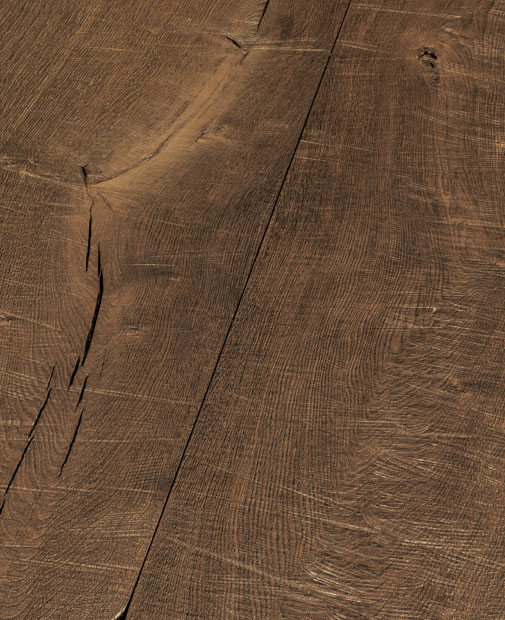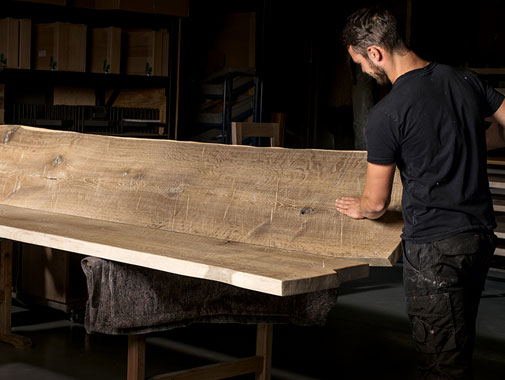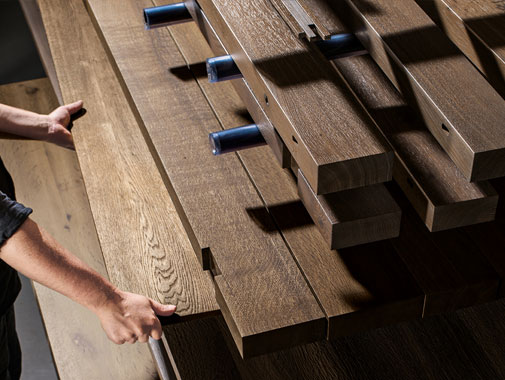Smoking
Smoked oak is one of the most fashionable surfaces around at this point. Discovered by chance, smoked oak has its roots in farmers’ stables. Puzzled by why the oak beams and planks grew so dark so quickly, researchers looked into the causes. They discovered something interesting: The gas released by horses and cattle contains ammonia which reacts with the tannic acid of the oak. The colour shade cannot be influenced as part of this process because the tannic acid content varies from board to board. This also results in colour differences within a table top or a piece of furniture, though these only serve to underline the vibrant nature of this method. The pigmentation levels “white raw effect” and “anthracite” are a good choice if you’d like to reduce colour differences.


The quirks of nature
Nature likes to show the world it´s true self: extraordinary, untidy, imperfect. It leaves processes to chane, sugar-coating nothing. And it´s precisely this that helps create the absolutely astonishing. Just like smoked oak - a true quirk of nature.
Today, the chemical reaction from the cowshed is solved by technical means, of course: by treating the oak with ammonia, its wood assumes a brown, dark-brown to black hue. Its saturation, in turn, depends on the amount of tannic acid contained in the native oak. In addition, the reaction of the ammonia or ammonium chloride with the constituent parts of the wood forms age- and light-stable complex organic salts that make the wood more supple and at the same time more resistant and gives innovative German interior designers another fascinating method of surface refinement.



Ammonia reacts with the tannic acid of the oak and darkens the wood. Sapwood remains lightly coloured as it doesn´t contain any tannic acid.